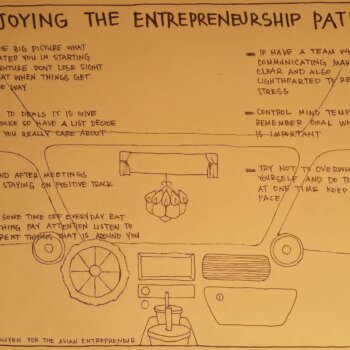“Gamification is the process of using game thinking and game dynamics to engage audiences and solve problems.”
Author, speaker, and expert on gamification Gabe Zichermann wrote that in his book Gamification by Design. Let’s just sit on it for a moment: ‘to engage audiences’… ‘and solve problems.’
Conveniently, both mean the same thing for us marketers – one problem we have to solve is engaging audiences. Making content attractive. Building readership and loyalty. That’s where the interactive element comes in.
Marketing gamification has been around for years. Back in 2011, CMI covered 4 outstanding examples of brands that used it to both educate and entertain. It’s proven to work: invite (and incentivise) active participation, appeal to people’s competitive nature, and impart a sense of progression in the experience, and content will be much better received.
But there are times when it doesn’t quite work. When people don’t sign up to play, or give up their seats like they ran out of coins at the arcade. Gamifying your content may not always be the best, or even the right, choice – let these few points help you make that call.
1. Persona
As with any marketing activity, demographics are everything. Is your target audience the sort that appreciates clicking through a quiz or pushing pixels around to unlock content?
You have a lot of leeway if they do, but many, in particular the C-levels, don’t. So if the latter group is your target, it might be a good idea to keep the participation process as simple as possible – perhaps just a comment, or a share through their social network.
Another approach, for time-strapped audiences, is to keep your game bite-sized – one self-contained chapter at a time, each short enough for even a busy commuter to complete on their mobile in between trains or buses. At the same time, this can help greatly with keeping momentum going, motivating gamers to learn more.
2. Objective
What you’re aiming for also determines how your content is gamified. Each objective may require its own game design and approach.
Content designed to generate leads can be quite different from content meant to educate and build demand. If you’re repurposing existing content, review factors like tonality, scope, relevance, and utility – these are your clues to which game mechanics will help drive the behaviours you want. Take, for example, the marriage of useful information and instant gratification in our ‘Pulse Survey’.
And, of course, gamification isn’t all it can be without a direct link to your overarching marketing plan. If you introduce something about your offerings in the game, let gamers find out more about it after the credits roll. Link them over to where the details are, offer them a downloadable asset, or at least capture their emails for lead nurturing.
The idea is for them to not just play and leave. Unless you’re Coca-Cola or Apple, you might not want to trust your brand image alone to make folks stick around.
3. Perceived Credibility
A third factor that comes into play with gamified marketing is the way people look at it. Games are fun, yes. But, as they say, the white paper is not dead. There are many who still put their stock in long-form content, because it’s seen as a more credible source.
This ties back into the point about evaluating your audience personas. People searching for information they can use to pitch to decision-makers may be more likely to find a well-written article or in-depth infographic of greater value – because these are assets that can be annotated, circulated, and discussed.
This directly affects your gamification. If you know influencers will be among your audience, ensure you cater for them by preparing chunks of your content for them to easily download and share. These might be cheat sheets, or simply chapter recaps in a quiz.
So yes, content gamification is a viable way to boost engagement and retention with your prospects. But there is nothing watertight in marketing. Before you commit to it, think about how you’re going to do it – and whether you should be doing it at all. Your content might be good enough on its own without turning it into Super Mario.
written by Chester of B2Bento. see more.





























